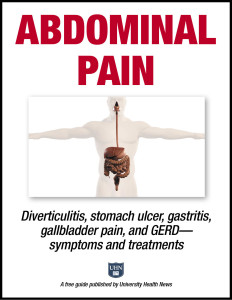How to Identify Gallbladder Pain
Your gallbladder is a small, pear-shaped organ located on the right side of your abdomen beneath your liver. Your gallbladder stores bile that is produced by your liver. When you consume foods that contain fat, your gallbladder releases bile into ducts (tubes) that carry the bile to your small intestine, where it assists in the breakdown of fat.
Bile is a fluid that contains water, acid, cholesterol, bilirubin, and lecithin. If crystals form in the bile and clump together, they form gallstones, which may be as small as a grain of sand or as large as a golf ball. If a gallstone gets caught in a duct, it can block the flow of bile and cause your gallbladder to become inflamed.
Gallstones typically will cause one or more of these symptoms:
- Sudden pain in the middle or upper right section of your abdomen (the pain may last a few minutes to a few hours, and it may come and go)
- Pain in your back between your shoulder blades or in or under your right shoulder
- Nausea and/or vomiting
- Sweating, fever, and chills
- Clay-colored stools
- Dark-colored urine
- Yellowing of your skin and/or the whites of your eyes (jaundice)
Fight Back!
Download this expert FREE guide, Abdominal Pain: Diverticulitis, stomach ulcer, gastritis, gallbladder pain, and GERD—symptoms and treatments.
Learn more about your digestive system, how it works, why and how it sometimes acts up, and most important, what you can do about it.
Risk Factors for Gallstones
Undergoing a medical evaluation is the only way to determine if what you believe to be gallbladder pain is actually due to gallstones. However, if you have many risk factors associated with gallstones, you may want to share that information with your doctor. Factors associated with a higher risk of gallstones include:
- Having diabetes
- Losing weight very quickly, such as after gastric bypass surgery
- Having a family history of gallstones
- A diet high in fat and/or cholesterol and low in fiber
- Being overweight or obese
- Being female
- Taking medications that contain estrogen, such as hormone therapy drugs
- Being age 60 or older
- Being an American Indian
- Being a Mexican-American
Gallstones: Diagnosis and Treatment
If your doctor believes you may have gallstones, he or she will likely order an abdominal ultrasound and/or a computerized tomography (CT) scan. These tests create images of your gallbladder that can then be examined for signs that gallstones are present. Other tests may help your doctor determine whether a gallstone is causing a blockage in your bile ducts. In these tests, a special dye is used to highlight your bile ducts.
If you have gallstones that are causing symptoms, the most common treatment is gallbladder surgery, in which your gallbladder is removed. There are medications that may help dissolve gallstones, but it may take months or years, and sometimes, the gallstones never dissolve. Gallstones are usually treated with medication only if the patient is unable to have gallbladder surgery.
Bottom line: If you think you have gallbladder pain, see your doctor as soon as possible; a medical evaluation is the only way to confirm that your symptoms are from gallstones.
Originally published May 2016 and updated.
The post How to Identify Gallbladder Pain appeared first on University Health News.
Read Original Article: How to Identify Gallbladder Pain »
Powered by WPeMatico


